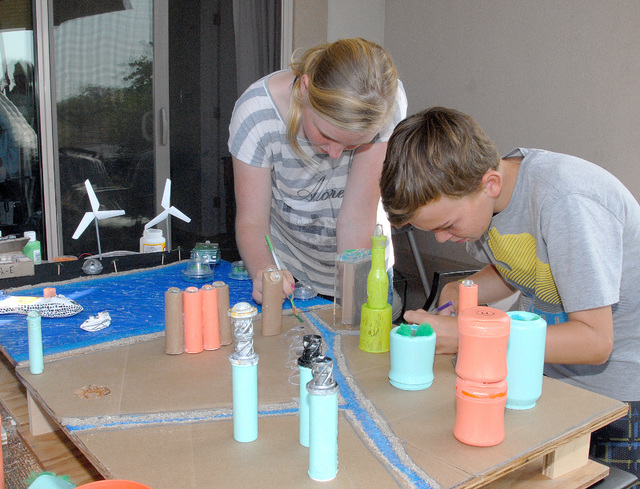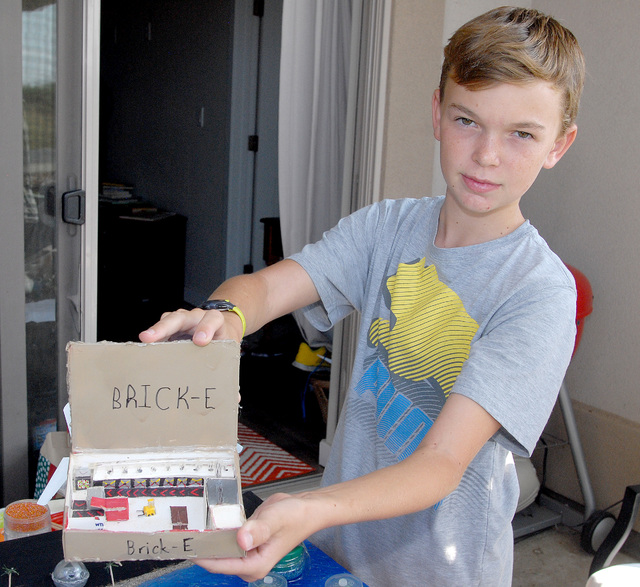KAILUA-KONA — What will Kailua-Kona look like in 2116?
KAILUA-KONA — What will Kailua-Kona look like in 2116?
That’s a tough question, but some middle school students from Waiaha School have an idea.
They see a sustainable city with zero waste and 100 percent renewable energy.
And that vision is taking those young visionaries to a regional showdown, where eight students will take part in the Future City Competition Jan. 20 in San Diego, the first school from the state to compete in the event.
And those kids are looking to the past as they form what they think is ahead.
“Students studied ancient Rome and the way they dealt with water and waste,” said Kris Richards, teacher and mother involved with the project. “Then they researched the Big Island and how they have dealt with waste over the decades. Now they are predicting how it could go as the population increases into the next 100 years.”
Waiaha School, located at the University of the Nations campus, is joining the Southern California region to compete against 55 other schools. The winner will advance to the national competition in Washington D.C.
Parents and teachers decided to modify history and science classes this year so the kids could do Future City, which is a STEM (science, technology, engineering and math) based project.
“We looked back to see the future,” said seventh-grade student Austin Randerson. “There’s been a lot of trial and error.”
The students first designed a virtual future city using online game SimCity program, which allows users to build cities at the click of a mouse and tap of the keyboard, then wrote a 1,500 word essay describing the unique attributes of their city and provided a solution for this year’s theme “Waste Not, Want Not,” a waste management challenge. Finally students create a scale model of their city for presentation at the regional competition.
“Each student is operating in their giftings. The eloquent ones are giving the speech, the great writers are assembling the paragraphs all the kids wrote, the hands-on-learners are doing the brunt of the 3-D model,” Richards said.
Seventh-graders Mary Johansen and Austin Randerson were eager to show off their vision as they worked to create the model using only recycled materials.
An artificial island named K-Koa is situated 300 yards off shore, home to resorts and “high-end residential” with canals and a monorail connecting it to the center of Kona, according to Johansen.
All buildings are pneumatically — a branch of physics applied to technology that makes use of gas or pressurized air — connected to “Brick-E,” where residents and visitors deposit their trash. Once the trash reaches the building it is sorted, with organics going to compost for the aquaponic boats growing food in Kailua Bay. Recyclable material is turned into bricks and building materials. Plastics are recycled into material used in 3-D printers, which are in every home.
“The best part of this is that it’s fun to build the city how we think it should be,” Randerson said.
Of course, sending a team of students to the mainland isn’t cheap. The kids have been fundraising and seeking corporate and individual sponsors to help cover the $8,106 it will take to get the kids and their model to the competition, according to Dawn Johansen, lead teacher.
They’ve been holding fundraisers around town to raise enough to share their vision with the rest of the region and, perhaps, nation.
“The registration fee was waived for our school because the contest organizers have never ever seen a team from Hawaii,” Richards said. “The kids are doing two to three fundraisers a week. They already held a dodgeball tournament, have sold untold baked goods and snow cones and held a car wash at the University campus.”
Info: waiaha.ifs@gmail.com


